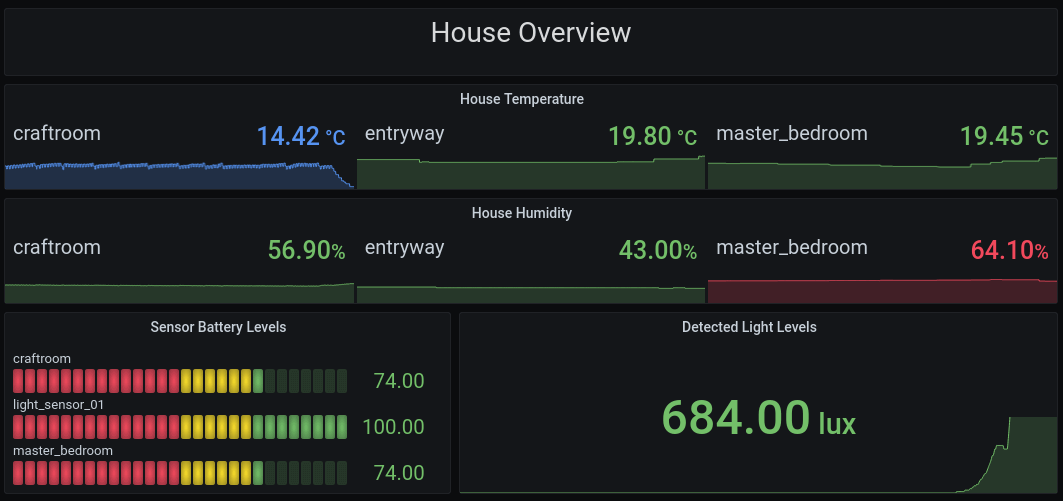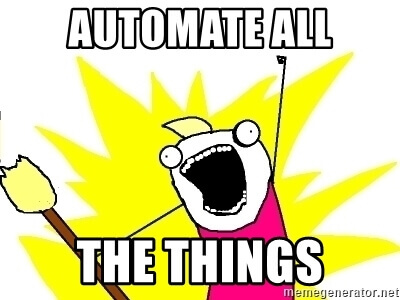If you’ve been following this blog so far then you’ll know that we’ve decided to use smart switches instead of smart bulbs, and that we’re going to be using Hubitat as our “hub.
Today, I want to talk about automation - what is it, what can it do, should we use it all the time, and when should we use it?
What is Automation?
Automation comes in many forms, from fully automated production lines in factories to machine-learning equipped smart cars, so what do we mean by automation when it comes to a “smart house”?
For me, it’s about removing the need to interact with any switches or “smart assistants” (Amazon Echo, Google Home etc) in order for your house to work with you and the other occupants.
A good example of this is the rule I have setup in Hubitat to greet me each morning:
This rule is triggered buy motion at the top of the stairs, and by the time I reach the lounge at the bottom of the stairs the “big lights” (a family joke representing the main lights in the room) are at 25% brightness. The lights then wait at 25% for 10 minutes, and then fade up to 100% over a 60 second period until they are at full brightness.
Why do I do this? I get up in the dark most mornings so I don’t disturb other family members, and my eyes don’t adjust quickly to instant brightness, so this gives me a gentle way to see where I’m going without making me sneeze!
Now that I’ve explained that our goal is to remove interaction with switches and voice assistants, let’s look at some of the other things we can do with automation.
What can we do with automation?
The short answer is “anything we want, as long as we’re prepared to put in the effort to set it up”, but that’s not very helpful, so let’s look at a few concrete examples.
Hubitat has an excellent Rules Machine that can be used to run automations like the one above.
Using various sensors, we could construct automations such as the following:
- If the light levels outside drop below a particular level, turn on the garden lighting
- If it is later than 1600hrs and it’s a weekday, and the light levels outside are lower than 2000lux, turn on the lights in the house
- If I switch the TV over to Netflix, slowly fade out the lights in the lounge and set the volume on the sound system to a given volume
- If my average heart rate for the day has been higher than 90bpm, use my phone location to detect when I’m home, make sure the lights are at a low level, and start playing a specific play list on my SONOS speakers
Obviously the last one requires all kinds of systems talking back to your hub to calculate average heart rate and “geo-fencing” (your distance from a fixed location), but it’s definitely something that’s possible!
The key to all of the above (and to successful home automation!) is not the lights or speakers, it’s the sensors that detect movement, light levels, TV status, heartrate, or location, so once you know the kinds of rules you want to automate then work out the sensors you need for that, and then link it all together via your hub.
Should we automate everything?
It’s tempting, it really is, but what if you decide to automate your smart lock to unlock the front door when you’re within 10 meters of your house, and then go out but leave your phone behind? You door will unlock itself within seconds of you walking out the door and locking it behind you.
We could automate the kettle so that it switches on when you’re 10 minutes from home, providing you with freshly boiled water just as you walk through the door, but if there’s no water in the kettle then it’s a fire hazard.
The truth is that whilst automation is fantastic and can be used to enrich our lives, we have to think about each automation as we design it and make a decision as to whether the benefits outweigh any risks.
When I started installing smart home kit into our house, no one used it apart from me. Now I’ve added voice control, and Alexa is constantly asked to turn lights on and off, play music across the house, and even switch everything off at the end of the day.
Automation, if done properly, can ensure that your smart home doesn’t just work for you, but it works with you, making your life easier one sensor and rule at a time!


